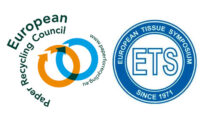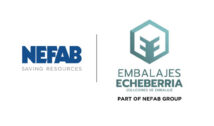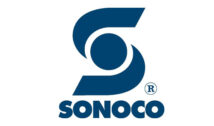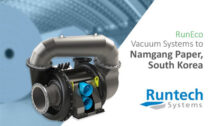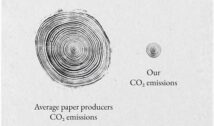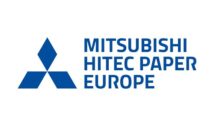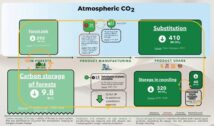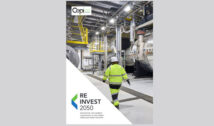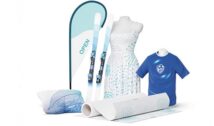
Kamila Rahman, Regulatory Officer at Aquapak, unpacks the detail of the proposed regulation
On 30th November 2022, the European Commission published an update to the Packaging and Packaging Waste Directive (PPWD) as part of the Circular Economy package. It is probably the most far-reaching legislation ever affecting packaging and packaging design. The 118-page document contains a huge amount of detail which organisations must decipher to understand the implications the proposed regulation may have on the packaging material they produce and, any business, large or small, which places packaging into the EU market. It has been proposed as a Regulation as opposed to a Directive which means that it must be enacted by Member States once finalised to ensure a harmonised and well-functioning internal market which is unfragmented.
The primary objective of the regulation is to reduce packaging production and associated waste, as well as improve the recyclability of any packaging and grow the market for recycled content. A much needed and welcomed step.
Recyclability of packaging
A key part of the new regulation are the Design for Recycling (DfR) Guidelines, the release of which are eagerly awaited via the delegated act, and which will determine the recyclability of packaging.
It seems that the European Commission will rely on industry experts and the supply chain to deliver these, providing an opportunity for firms like Aquapak that have developed innovative new technologies, to make a positive contribution to the guidelines.
The proposed regulation sets out that all packaging must be fully recyclable by 2030 and ‘Recycled at Scale’ by 2035. By recyclable, meaning that packaging must meet the Design for Recycling (DfR) Guidelines and if it is considered <70% recyclable (performance grade E), the packaging is considered not recyclable.
Implications for new materials
Clearly, the Regulation will have an impact on innovative new materials such as those produced with Aquapak’s innovative polymer, Hydropol™, a polyvinyl alcohol-based compound with excellent barrier properties which can be used to manufacture packaging in many formats. Not only is Hydropol recyclable, but it also has several other positive attributes and end-of-life credentials, as it is biodegradable, compostable, non-toxic and marine-safe, and can be used in a range of packaging applications.
We will continue to follow the development of the Design for Recycling (DfR) Guidelines and work with our industry via associations to ensure that our needs and that of our customers are met. We are aware that EU groups such as 4Evergreen as part of CEPI for fibre-based packaging and RecyClass for plastic packaging have engaged with the European Commission and its programme of work in this area.
Hydropol™ has been extensively tested to demonstrate that it meets the 4Evergreen ‘Recyclability Evaluation Protocol’ when coated onto paper and is suitable for standard mill recycling.
Furthermore, we are confident that Hydropol™ can be sorted and recycled within polyolefin recycling streams when used as a barrier for film and with initiatives such as CEFLEX, working on circular economy for flexible packaging, accepting PVOH as a barrier up to 5%, we are in a great position going forward.
Compostability
Initially, the draft regulation proposed a partial ban on all compostable plastic packaging as it can be seen to cross-contaminate recycling streams. However, this was eventually lifted, and compostable packaging solutions will continue to be allowed to be marketed and recycled in the EU.
We commend the European Commission’s endorsement of the important role of compostable plastic packaging in reaching the ambitious waste and climate targets. In addition, by making several packaging applications mandatory to be compostable in industrial composting facilities, including tea bags, filter coffee pods, fruit stickers, and very lightweight plastic carrier bags, the Commission is taking a first step in the right direction.
Hydropol™ film meets the European standard EN13432 for compostability[1], meaning that it can be used in the formats as stated above to collect and dispose of biowaste and divert from landfill.
The proposed regulation is under review by the European Council and the European Parliament with the overall legislative process expected to take a further 18 months before the regulation is expected to be enacted by end of 2024. The European Commission is hosting a public consultation and the feedback period is open for a minimum period of eight weeks running until 27th March 2023 (date likely to be extended). Organisations can contact their relevant industry body to understand how they are planning to respond.
Keys facts:
Following is simplified summary based on Aquapak’s interpretations of the proposed regulations. For the full text, please refer to the proposed regulation Reducing packaging waste – review of rules (europa.eu).
[1] Based on extrapolative data and gauge dependant.
| Key Dates | |||
| Targetable Measures | Jan 2030 | Jan 2035 | Jan 2040 |
| Recyclability – packaging is recyclable if: | As of 1 Jan 2030, it complies with Design for Recycling Guideline as set out in the delegated act(s)
It is not recyclable if it is Performance grade E (<70% recyclable) and not recycled at scale
|
As of Jan 2035, it is recycled at scale according to the methodology established in the delegated act(s)
|
|
| Recycled content in plastic packaging
(*) Per unit of packaging (**) Contact sensitive means food contact, medical devices, medicines etc.
|
· 10% for contact sensitive** plastic packaging other than PET
· 30% for PET contact sensitive** plastic packaging
· 30% for single use plastic beverage bottles
· 35% for all other plastic packaging
|
· 50% for PET contact sensitive** plastic packaging
· 65% for single use plastic beverage bottles
· 65% for all other plastic packaging
|
|
| Reusable packaging:
|
|||
| Hot and cold beverages | 20% | 80% | |
| HORECA sector | 10% | 40% | |
| Packaging alcoholic beverages (exc wine) | 10% | 25% | |
| Wine | 5% | 15% | |
| Non-alcoholic beverages in the form of water | 10% | 25% | |
| Waste prevention | 5% | 10% | 15% |
| Compostable packaging | Following items are mandated to be industrially compostable in bio waste treatment facilities:
· Tea bags · Filter coffee pods · Fruit labels · Very lightweight carrier bags
|
||




